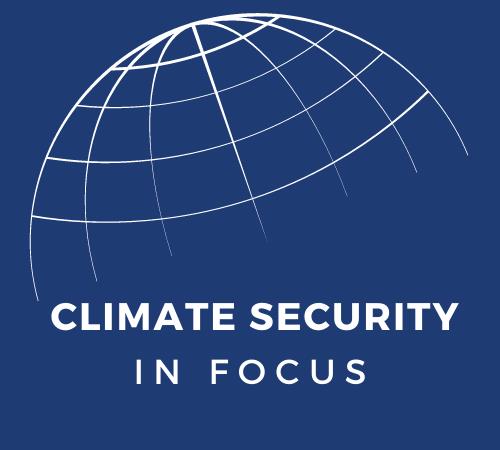 Notice: Undefined offset: 0 in /nas/content/live/americansp/wp-content/themes/asp/addon/credit.php on line 23
Notice: Undefined offset: 0 in /nas/content/live/americansp/wp-content/themes/asp/addon/credit.php on line 23
Clean Car Standards, American Competitiveness, and National Security
In 2021, President Biden continued to build on the Administration’s climate action track record by issuing Executive Order (EO) 14037, Strengthening America’s Leadership in Clean Cars and Trucks, which sets standards and targets for greenhouse gas emissions (GHG) for trucks and cars across America. The EO included directives for the Secretary of Transportation and the Environmental Protection Agency (EPA) to initiate rulemaking on light-, medium- and certain heavy-duty vehicles for model year 2027 and beyond. The subsequent proposed standards were issued in April 2023, and are the strongest-ever, designed to accelerate the transition to cleaner cars, such as electric vehicles (EVs).
As ASP has written about before, clean car standards have multiple benefits for individuals and communities. The existing 2023-2026 standards are estimated to result in an 1 billion tons of avoided carbon emissions by 2050, as well as potentially saving Americans up to $420 billion in fuel costs over the next thirty years. The new, stronger emissions standards for model year 2027-2032 have additional projected benefits in the trillions of dollars. When combined with the incentives and funding with federal legislation like the CHIPS and Science Act, Infrastructure Investments and Jobs Act (IIJA) and the Inflation Reduction Act (IRA), these climate-friendly actions have laid the groundwork to expedite the transition away from fossil fuels and toward electric vehicles (EVs) and other low- or zero-emissions vehicles. But the benefits of strong clean car standards and the clean energy transition don’t just result in lower GHG emissions and better health outcomes—there are also significant benefits for American competitiveness and national security.
As a key component of the clean energy transition, strong clean car standards and increased electrification help create the conditions for industry and individuals to transition away from fossil fuels. This transition helps foster U.S. energy security and reduce financial benefits to petro-states like Russia—an imperative that has renewed importance given the invasion of Ukraine. But critics of widespread EV adoption have been tempted to point to China’s dominance of the critical mineral extraction and refining industry as a misguided reason to abandon higher standards and EVs given that China controls many of the resources that are instrumental in EV batteries and operations. Others, including the United Auto Workers (UAW), are justifiably concerned about how the EV and clean energy transition will impact existing jobs and the energy industry writ large.
Like any major transition, clean energy innovations and shifts in energy markets will be disruptive to existing ways of doing business. But as Richard Kidd, former Deputy Assistant Secretary of Defense for Environment & Energy Resilience recently highlighted, this transition, and competing in critical minerals and EV industries, is essential for America’s competitiveness worldwide as well as its national security. To continue the status quo is akin to allowing China to dominate the industry unchecked, as well as continuing to absorb an unnecessary risk to supply chains and industries throughout the country. Likewise, failure to pursue clean energy policies and programs would simultaneously cause the U.S. to miss out on millions of new jobs and economic benefits.
The CHIPS and Science Act, IIJA, and IRA program rollouts are still in the early stages, and implementation faces several crucial challenges, but the robust funding and investment incentives are already showing promise across the country. There are also several other federal actions that are facilitating important actions to shore up American competitiveness and supply chains. The Department of Energy has developed a Critical Minerals Strategy; the Biden Administration has issued E.O. 14017, America’s Supply Chains and a subsequent 100 day review; and the Department of Treasury has released guidance to drive domestic investment in critical minerals and battery supply chains. The Departments of State and Commerce hosted a summit (2021) and ministerial meeting (2022) with 14 countries and the European Union to mitigate future supply chain disruptions and facilitate supply chain diplomacy. The White House has also established a first-of-its kind Supply Chain Disruptions Task Force (SCDTF) to address critical supply chain risks, vulnerabilities, and challenges.
Several cabinet agencies, including the Department of Defense, have also released supply chain focused strategies and policies that support continued action. These encompass a vast array of specific focus areas, but almost all include critical minerals and energy storage, which will have implications for the clean energy transition. In addition to the recommendations outlined in the DoD plan, the House Armed Services Committee (HASC) Defense Critical Supply Chain Task Force listed “reducing reliance on adversaries, such as China and Russia, for resources and manufacturing” as one of its final recommendations—further demonstrating how all of these issues are connected.
As we begin to turn toward 2024, the U.S. has an unparalleled opportunity to leverage funding and innovation to position itself as the leader in clean energy. By continuing to pursue the strongest emissions standards and build a domestic manufacturing base for clean energy, the U.S. will not only position itself as a major economic force, it will also enhance its own resilience and security.
Climate Security in Focus is a blog series dedicated to exploring key elements of climate security that impact American interests both at home and abroad. The series aims to examine specific aspects of climate security issues in order to better understand climate policy challenges, facilitate conversation, and generate ideas.





